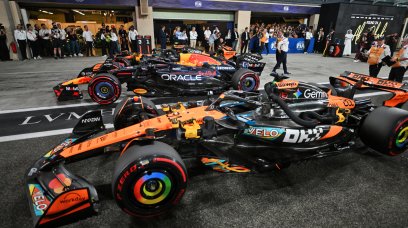Lewis Hamilton has a clear stance on the potential ban of tyre warmers in Formula 1 , as the FIA and Pirelli look to phase out their usage in the next couple of years. The Mercedes driver explained how he thought the rule change would be "dangerous" and warned there could be "an incident" at some stage. One of the main reasons for removing the usage of the tyre warm-up method is to do with their environmental impact, as it could save huge amount of energy being used at circuits. But Hamilton believes the trade-off between burning fuel while having to warm up the tyres on track and heating them in the garage is a "pointless exercise."
Hinchcliffe: Argument that it's dangerous disproven in other motorsport categories
Former IndyCar driver James Hinchcliffe said he is "confused" by the viewpoint expressed by Hamilton and other drivers, adding that the argument over it being "dangerous" has been "disproven" in other motorsport categories. "Confused by some F1 drivers reluctance to ban tyre warmers. It makes for better racing, it highlights the skill of driving on cold tyres, and it saves a ton of money/pollution from freight and energy consumption," he said in a post on social media. "The argument that it’s dangerous has been disproven in many other four-wheeled motorsport, and recent claims that it’s less sustainable because you’d have to ‘use more fuel to put heat in the tyres’ are inaccurate. "Cold tyres mean less throttle use/higher lap times, which means less fuel consumption."
Drivers need to give Pirelli time to develop
F1 is highly limited in the terms of the amount of testing that teams can conduct, with only a handful of opportunities throughout the year for Pirelli to carry out tyre testing. Last year the tyre-maker had to reschedule dry tyre tests that were planned for the Japanese Grand Prix weekend, owing to the poor weather during the weekend. Hinchcliffe believes drivers need to give the tyre manufacturer time to find a solution before making any quick judgements. "Maybe the first round of Pirellis wasn’t up to the task, but the same manufacturer did it in F2 without issue," he said. "Give them the time they need and this should absolutely be the future for F1. It’s concerning, however, that they need 50% buy in from teams to pass the rule."
Most read









